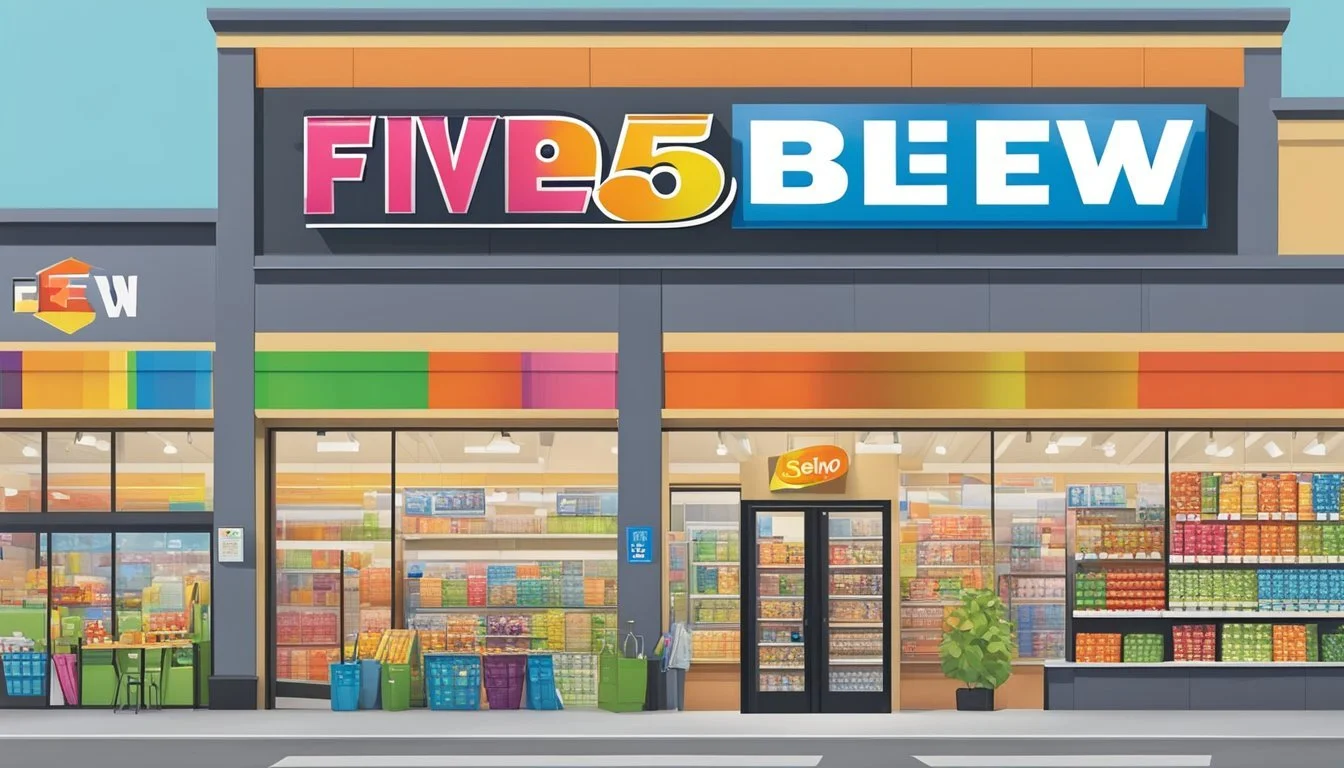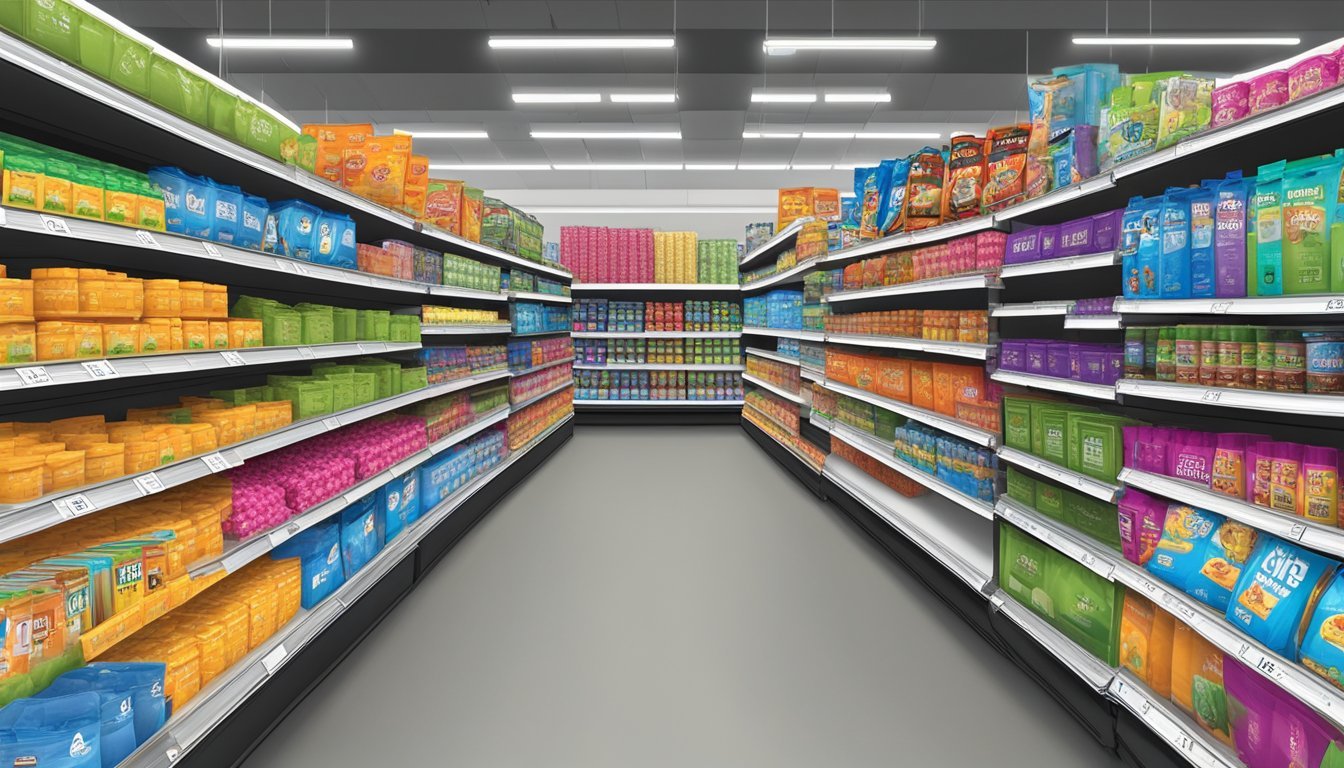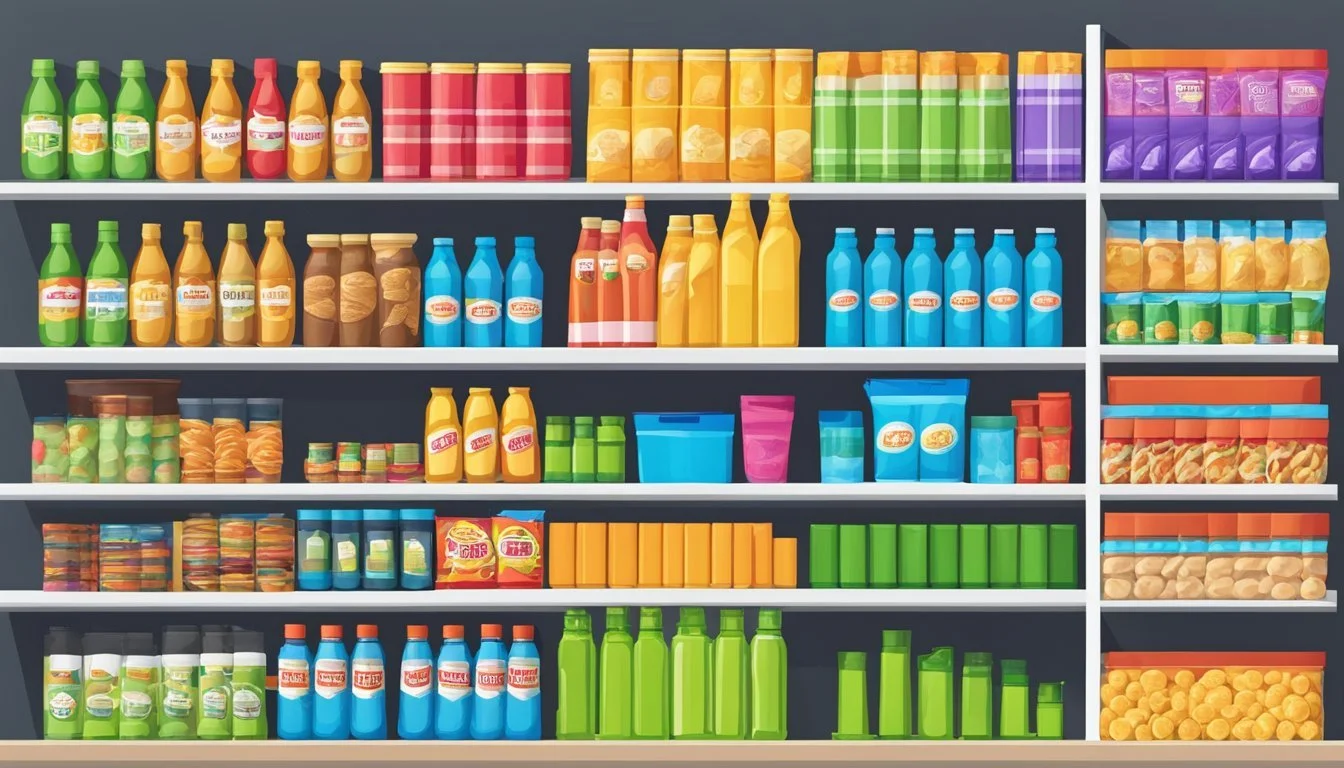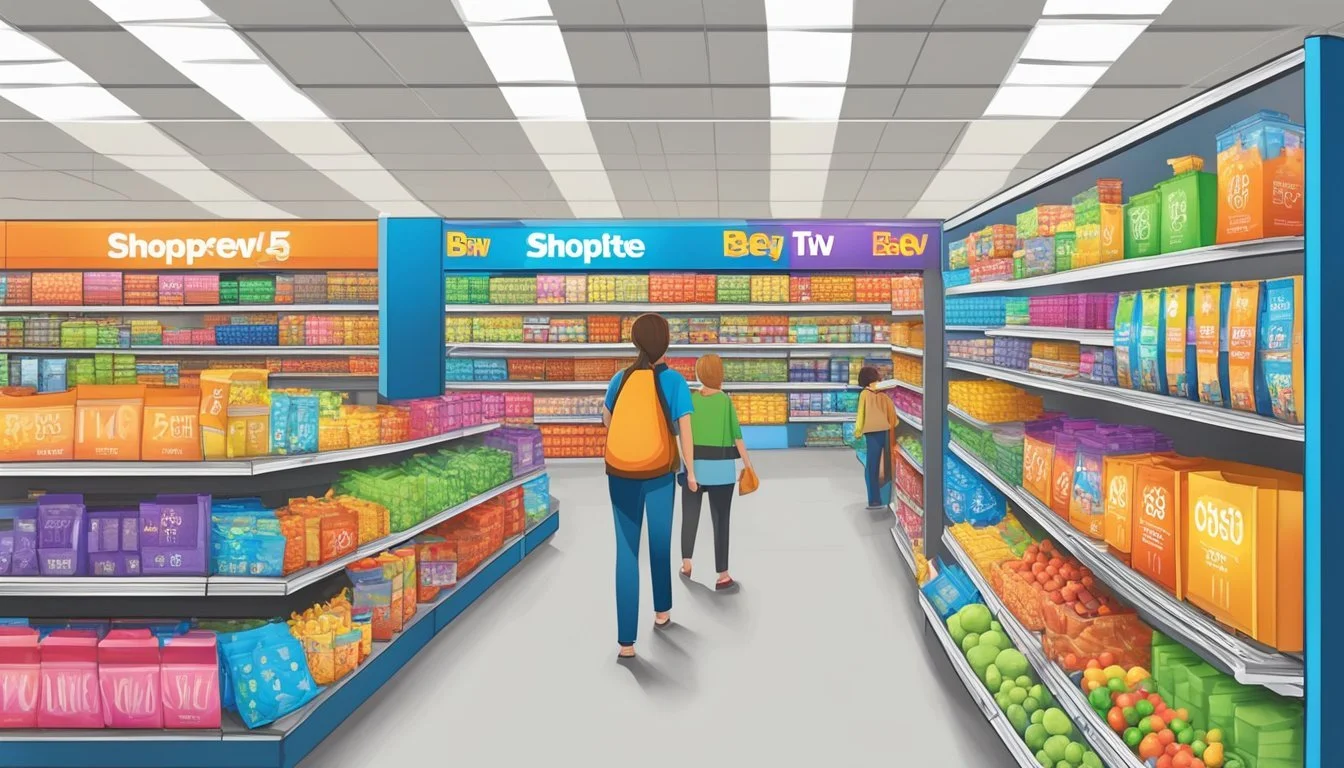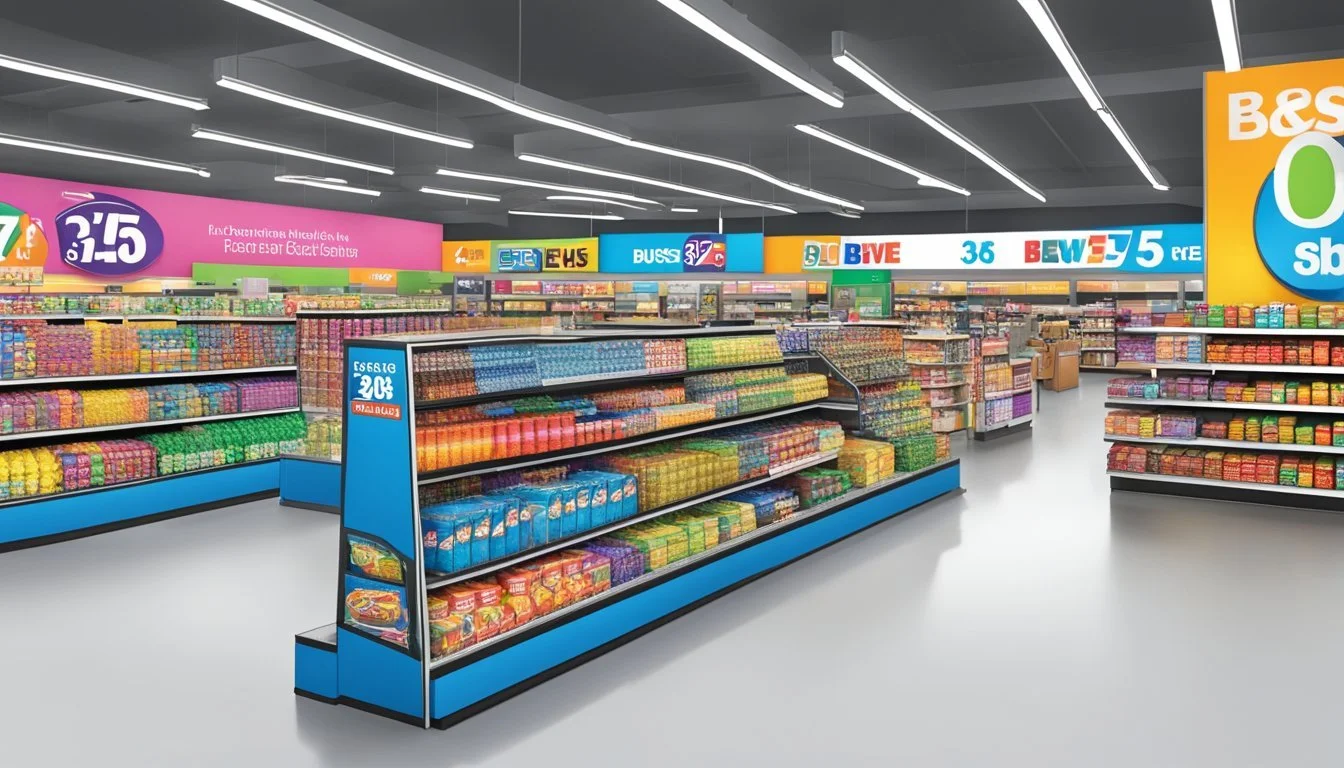Is Five Below Cheaper Than ShopRite?
A price comparison of discount stores
Five Below and ShopRite cater to different shopping needs, making a direct price comparison challenging. Five Below specializes in trendy, low-cost items primarily aimed at teens and young adults, with most products priced at $5 or less. ShopRite, on the other hand, is a full-service supermarket chain offering a wide range of groceries and household essentials.
For general household items and snacks that both stores carry, Five Below may offer lower prices on individual products. However, ShopRite's broader selection and frequent sales can lead to overall savings on grocery purchases. ShopRite also provides opportunities for additional discounts through loyalty programs and digital coupons.
Savvy shoppers may find value in utilizing both stores. Five Below can be an excellent option for inexpensive gifts, party supplies, and seasonal items, while ShopRite remains a go-to destination for comprehensive grocery shopping and weekly meal planning.
Overview of Five Below and Shoprite
Five Below and Shoprite are prominent retail chains in the United States, each catering to distinct market segments. These companies have carved out unique niches in the retail landscape through their specialized offerings and business strategies.
History and Business Models
Five Below, founded in 2002, operates as a discount store chain specializing in products priced at $5 or less. The company has experienced rapid growth, expanding to over 1,000 locations across the country. Five Below's business model focuses on offering trendy, affordable items across various categories, including toys, tech accessories, and home decor.
Shoprite, established in 1946, functions as a cooperative of independently owned supermarkets. With more than 300 stores, primarily located in the northeastern United States, Shoprite has become a significant player in the grocery industry. The company's business model emphasizes competitive pricing, diverse product selection, and strong community involvement.
Target Markets
Five Below primarily targets younger consumers, including tweens, teens, and young adults. The store's vibrant atmosphere and constantly changing inventory appeal to budget-conscious shoppers seeking affordable trendy items. Five Below's product mix attracts customers looking for inexpensive gifts, party supplies, and seasonal merchandise.
Shoprite caters to a broader demographic, focusing on families and individuals seeking value in their grocery shopping. The supermarket chain aims to meet diverse customer needs by offering a wide range of products, from fresh produce to prepared meals. Shoprite's emphasis on competitive pricing and frequent promotions appeals to cost-conscious shoppers seeking quality groceries at affordable prices.
Price Comparison Strategy
Effective price comparison between Five Below and ShopRite requires understanding their distinct pricing models and target markets. Both retailers employ different strategies to attract customers and maximize value.
Pricing Policies and Strategies
Five Below adheres to a fixed price point model, selling most items for $5 or less. This approach simplifies shopping for budget-conscious consumers seeking affordable goods. The retailer focuses on trendy, seasonal, and impulse-buy items across various categories.
ShopRite, as a traditional grocery chain, uses a more dynamic pricing strategy. They offer regular sales, promotions, and loyalty programs to entice customers. ShopRite's prices fluctuate based on market conditions, competitors' actions, and product availability.
Five Below maintains consistent pricing, while ShopRite's prices may vary week to week. This difference impacts how consumers approach shopping at each store.
Cost Structure Analysis
Five Below's cost structure relies on bulk purchasing and efficient supply chain management to maintain low prices. The company sources products directly from manufacturers, often in China, to reduce costs. This allows them to offer items at significantly lower prices than traditional retailers.
ShopRite's cost structure is more complex due to its wider product range and perishable goods. The chain negotiates with suppliers, manages inventory turnover, and balances labor costs to keep prices competitive. ShopRite's membership in a retail cooperative helps leverage buying power for better deals.
Five Below's limited product range and focus on non-perishables contribute to lower operational costs. ShopRite's diverse inventory and fresh produce offerings result in higher overhead expenses, potentially impacting prices.
Product Assortment and Quality
Five Below and ShopRite offer distinct product ranges and quality levels. Their assortments cater to different consumer needs and preferences.
Variety of Products
Five Below specializes in trendy, affordable items priced at $5 or less. Their inventory includes toys, games, electronics accessories, home decor, and seasonal items. The store focuses on novelty and fun rather than everyday essentials.
ShopRite, as a full-service supermarket, provides a comprehensive grocery selection. Their product range covers fresh produce, meats, dairy, baked goods, and pantry staples. ShopRite also offers household items, health and beauty products, and some general merchandise.
Quality Standards
Five Below's products are designed to be inexpensive and may not prioritize long-term durability. The quality can vary, with some items offering good value for the price point.
ShopRite maintains higher quality standards, especially for perishables. Their produce, meat, and dairy sections often feature fresher options compared to discount stores. ShopRite's store brand products typically offer a balance of quality and affordability.
ShopRite's focus on groceries means they stock high-quality produce, meats, and dairy products. Their selection of fresh foods is more extensive and often of higher quality than what Five Below offers.
Special Deals and Savings
Both Five Below and ShopRite offer unique ways for customers to save money on their purchases. These retailers employ various strategies to provide value and attract shoppers.
Sale Prices and Discounts
Five Below maintains a consistent $5 or less price point for most items, simplifying the shopping experience. The store occasionally runs promotions on specific product categories, offering further discounts.
ShopRite, in contrast, employs a more dynamic pricing strategy. The supermarket chain features weekly sales, often including:
Buy-one-get-one-free deals
Digital coupons
Manufacturer rebates
ShopRite also uses loss leaders, pricing certain items below cost to draw customers into the store. These typically include staple items like milk, eggs, or popular snacks.
Membership and Loyalty Programs
Five Below does not currently offer a traditional loyalty program. Instead, they focus on maintaining consistently low prices across their inventory.
ShopRite operates the Price Plus Club, a free membership program that provides:
Exclusive discounts
Digital coupons
Gas rewards at participating stations
Members scan their cards at checkout to access these benefits. The program allows ShopRite to tailor offers based on individual shopping habits, potentially leading to greater savings for frequent shoppers.
Consumer Experience
Five Below and ShopRite offer distinct shopping experiences tailored to their product offerings and target customers. The store layouts, ambiance, and customer service policies differ significantly between these retailers.
Store Layout and Shopping Ambiance
Five Below features a bright, colorful interior with wide aisles and clearly marked sections. The stores typically have a youthful, energetic atmosphere with popular music playing. Products are displayed on open shelves and in bins, encouraging browsing and discovery. The layout is designed for easy navigation, with items grouped by price point or category.
ShopRite, in contrast, presents a more traditional grocery store layout. Aisles are organized by food categories, with produce, dairy, and meat sections along the perimeter. The ambiance is practical and focused on efficiently completing grocery shopping tasks. Many ShopRite locations offer wider aisles to accommodate shopping carts and families.
Customer Service and Policies
Five Below emphasizes a self-service model with minimal staff interaction. Cashiers are available for checkout, but customers are expected to find items independently. The return policy is typically 14 days with a receipt.
ShopRite provides more comprehensive customer service. Staff members are often available throughout the store to assist with product inquiries or locating items. Many locations offer additional services like pharmacy consultations and custom cake ordering. ShopRite's loyalty program, Price Plus card, offers personalized discounts and fuel perks at participating locations.
Both retailers maintain active social media presences and customer feedback channels. Consumer ratings on platforms like Consumerpedia generally reflect satisfaction with both stores, though for different reasons aligned with their distinct offerings and target markets.
Grocery Shopping Options
Consumers today have various choices for purchasing groceries, balancing convenience with cost-effectiveness. Online and in-store options cater to different preferences, while delivery and pickup services offer additional flexibility.
In-Store vs Online Shopping
Traditional in-store shopping allows customers to personally select items and compare prices. Many grocery stores offer loyalty programs and weekly specials. Online shopping provides convenience, allowing users to browse and purchase from home. Amazon Prime members can access grocery delivery from Whole Foods and other partnered stores.
Digital platforms often feature easy reordering and personalized recommendations. Some online retailers offer competitive pricing and bulk discounts. In-store shopping may be preferable for those who want to inspect produce or discover new products.
Delivery and Pickup Services
Grocery delivery has gained popularity, with services like Instacart and Shipt partnering with local stores. Customers can schedule deliveries at convenient times, often within hours of ordering. Many chains now offer their own delivery options.
Curbside pickup combines online ordering with the flexibility of collecting groceries at a chosen time. This service is typically free or low-cost compared to delivery. Some stores provide designated pickup areas for quick service.
Subscription-based services like Amazon Fresh offer regular deliveries of staple items. Local farms and specialty shops sometimes provide curated box deliveries of seasonal produce and artisanal goods.
Comparative Analysis by Product Categories
Five Below and ShopRite offer different product ranges at varying price points. A closer look at specific categories reveals where each store may provide better value for shoppers.
Fresh Produce and Meats
Five Below does not stock fresh produce or meats, while ShopRite offers a wide selection. ShopRite's produce section features competitive prices on fruits and vegetables, often with weekly specials. Their meat department provides various cuts at different price points.
ShopRite frequently runs promotions on popular items like chicken breasts and ground beef. The store's private label meats offer additional savings compared to name brands.
For shoppers seeking fresh foods, ShopRite is the clear choice between these two retailers.
Dairy and Frozen Foods
ShopRite carries a full range of dairy products and frozen foods, while Five Below's selection is limited. ShopRite's dairy section includes milk, eggs, cheese, and yogurt from multiple brands. Their frozen food aisles stock everything from vegetables to ready-made meals.
Five Below occasionally offers novelty frozen treats or snacks, but their inventory is inconsistent. ShopRite's larger selection allows for more competitive pricing and frequent sales on staple items.
Shoppers looking for everyday dairy and frozen goods will find more options and potentially lower prices at ShopRite.
Dry Goods and Pantry Items
Five Below specializes in low-cost snacks, candy, and limited pantry items, all priced at $5 or less. Their selection focuses on name-brand treats in smaller package sizes.
ShopRite offers a broader range of dry goods and pantry staples. This includes:
Cereals
Pasta and rice
Canned goods
Baking supplies
ShopRite's store brand items often provide significant savings compared to name brands. They also run frequent sales and promotions on pantry essentials.
For basic groceries and cooking ingredients, ShopRite typically offers better value and selection than Five Below.
Price Comparison in Various Locations
Five Below and ShopRite operate in different retail segments, but their pricing strategies can vary across locations. Market conditions and local competition influence how these stores price their products in different areas.
Regional Price Variations
Five Below maintains a consistent pricing model across most regions, with items priced at $5 or less. However, slight variations may occur in certain areas due to local tax rates or operating costs. ShopRite, being a grocery chain, experiences more significant regional price fluctuations.
In New Jersey, where ShopRite has a strong presence, prices tend to be competitive due to high market saturation. Pennsylvania and Delaware may see different pricing structures based on local economic factors and competition from other chains like Wegmans or Food Lion.
Researchers have found that ShopRite's prices can vary by up to 15% between different locations, even within the same state. This variation is less pronounced for Five Below due to its fixed price model.
Local Market Competition
The presence of other retailers like Walmart, Target, and Price Chopper significantly impacts local pricing strategies. In areas with strong competition, ShopRite often adjusts prices on common items to remain competitive.
Five Below, while less affected by grocery store competition, may face pressure from dollar stores or discount retailers in certain markets. This can lead to occasional promotional offers or the introduction of lower-priced items to maintain their market position.
Local market competition often results in price matching or special deals. ShopRite frequently offers location-specific promotions to compete with nearby grocery chains. Five Below may adjust its product selection in different areas to better compete with local discount retailers.
Branding and Marketing Influence
ShopRite and Five Below employ distinct branding and marketing strategies to attract customers and shape perceptions of value. Their approaches to pricing and reputation management play key roles in how consumers view each retailer.
Advertised Pricing
ShopRite focuses on competitive grocery pricing, often highlighting weekly sales and promotions. The supermarket chain uses circular ads and digital coupons to showcase discounts on everyday essentials.
Five Below, in contrast, builds its entire brand around a $5-or-less price point. This fixed pricing strategy is central to their marketing, creating a clear expectation for budget-conscious shoppers.
Both retailers leverage their pricing strategies in advertisements, but Five Below's approach is more integral to its core identity. The $5 price cap serves as a powerful marketing tool, instantly communicating value to potential customers.
Perceived Value and Reputation
ShopRite has established itself as a trusted grocery retailer with a wide product range. The brand is associated with quality food items and household necessities at competitive prices.
Five Below cultivates an image of fun, trendy finds at unbeatable prices. The store appeals to younger consumers and bargain hunters looking for inexpensive gifts, accessories, and novelty items.
ShopRite's reputation centers on being a one-stop shop for family needs. Five Below, however, positions itself as a destination for affordable indulgences and impulse buys.
Consumer perception of value differs between the two. ShopRite offers perceived value through product variety and competitive pricing on essential items. Five Below creates perceived value through low fixed prices on non-essential, trend-driven merchandise.
Alternatives to Five Below and Shoprite
Several retailers offer competitive pricing and diverse product selections compared to Five Below and Shoprite. These alternatives cater to budget-conscious shoppers seeking affordable groceries and household items.
Other Cost-Effective Grocery Chains
Aldi stands out as a top contender for budget-friendly groceries. Known for its no-frills approach, Aldi offers store-brand products at significantly lower prices than many competitors.
Walmart remains a popular choice for low-cost groceries and general merchandise. Their extensive product range and competitive pricing make them a versatile shopping destination.
Target appeals to shoppers looking for a blend of affordability and style. Their grocery section has expanded in recent years, offering competitive prices on many items.
99 Cents Only Stores provide an alternative similar to Five Below, with most items priced between $1 and $5. They offer a mix of groceries, household goods, and seasonal items.
Comparison with Specialty and Warehouse Stores
Warehouse clubs like Costco and Sam's Club offer bulk purchasing options at discounted rates. While membership fees apply, regular shoppers can realize significant savings over time.
Whole Foods Market, owned by Amazon, caters to health-conscious consumers. Though often perceived as expensive, their 365 Everyday Value brand provides more affordable options.
Amazon's online grocery service, including options like Subscribe & Save, can be cost-effective for non-perishable items and household goods. Free shipping for Prime members adds value.
Generic or store-brand products across various retailers often match the quality of name brands at lower prices. These options are available at most major grocery chains and discount stores.
Optimal Shopping Strategies for Consumers
Smart shopping tactics can help maximize savings while still getting essential items. Careful planning and strategic choices allow consumers to stretch their budget further at both Five Below and ShopRite.
Creating an Effective Grocery List
A well-organized grocery list is crucial for efficient shopping. Start by taking inventory of kitchen basics like salt, pepper, and baking powder. Plan meals for the week, including staples like pasta, rice, and bread. Add fresh produce, dairy items, and proteins needed for those meals.
Group similar items together on the list to streamline shopping. Consider generic store brand options for many staples. Include versatile ingredients like onions and tomatoes that can be used in multiple dishes.
Stick to the list to avoid impulse purchases. Review sale flyers and plan meals around discounted items when possible. A thoughtful list helps shoppers stay focused and avoid overspending.
Maximizing Savings on Essentials
Compare prices between Five Below and ShopRite for commonly purchased items. ShopRite often has better deals on fresh produce, meats, and dairy. Five Below can be cheaper for certain dry goods, kitchen tools, and seasonal items.
Look for sales and use coupons strategically. Stock up on non-perishable staples when they're discounted. Buy generic versions of pantry basics like sugar, flour, and pasta to save money without sacrificing quality.
Consider buying in bulk for items used frequently. Split large purchases with family or friends to take advantage of volume discounts. Frozen vegetables are often cheaper than fresh and retain nutrients well.
Plan meals around affordable protein sources like eggs, beans, and chicken. Shop seasonally for the best prices on fruits and vegetables. Compare unit prices to find the true best value among different sizes and brands.



